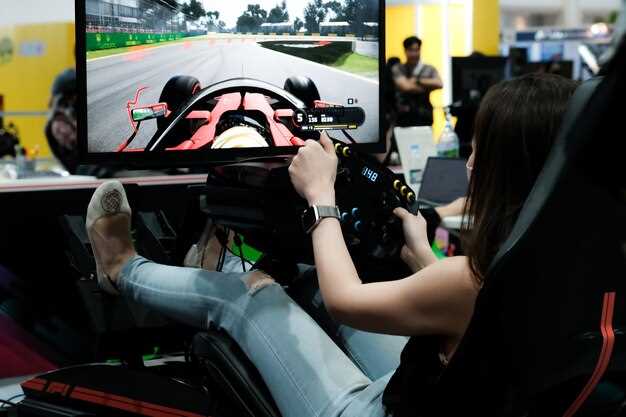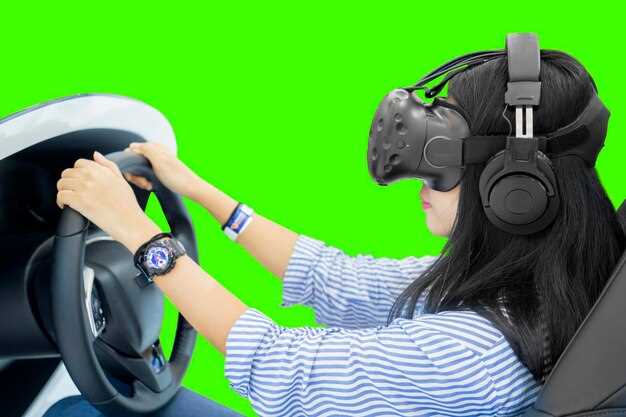

The intersection of sim racing and real-world motorsport is becoming increasingly significant, as advancements in simulation technologies redefine traditional racing dynamics. These innovations not only enhance the experience for virtual racers but also contribute valuable insights for professional drivers and engineers. By harnessing the power of data and realistic modeling, sim racing is rapidly transforming how teams prepare for competitions and analyze performance on the track.
One of the most notable trends in the realm of sim racing is the incorporation of cutting-edge physics engines that closely mimic real-world driving conditions. These simulations allow drivers to fine-tune their skills in a safe and controlled environment, enabling them to experiment with various racing strategies and vehicle setups. Consequently, the lessons learned in simulation are being directly applied to actual racing scenarios, bridging the gap between virtual and tangible motorsport experiences.
Moreover, sim racing has become a vital tool for data analysis in real racing. Engineers leverage simulation data to forecast how changes in aerodynamic configurations or tire settings will affect performance. This type of predictive analytics can significantly enhance a team’s competitive edge, as it allows for quicker adjustments and more strategic decision-making during races. As sim racing continues to evolve, its impact on the mechanics of motorsport is undeniable, paving the way for a new era of racing dynamics.
How Virtual Tire Models Enhance Real-World Race Strategies
In the world of motor sports, the interplay between tire performance and race outcomes is critical. Virtual tire models have emerged as an essential tool in sim racing, providing detailed insights that can translate directly to real-world racing strategies. These models simulate tire behavior under various conditions, offering teams the ability to analyze and fine-tune their approaches.
By leveraging sim racing technology, engineers can create sophisticated virtual environments that mimic tire dynamics with remarkable accuracy. This allows teams to conduct extensive tests without the logistical challenges and costs associated with physical testing. The data generated from these virtual simulations informs decisions regarding tire selection, pressure management, and optimal pit strategies.
Moreover, virtual tire models enable racers to experiment with different setups and scenarios. For instance, they can assess how changing weather conditions, track temperatures, or driving styles affect tire degradation and overall performance. This capability provides a significant advantage, as teams can develop informed strategies tailored to the unique circumstances of each race.
Additionally, the feedback loop created by integrating sim racing with real-world data fosters continuous improvement. Teams can take the lessons learned from virtual tire simulations and apply them directly on the track, enhancing the team’s ability to adapt to real-time variables during a race. As a result, the synergy between simulation technology and real-world application becomes a powerful asset in the competitive landscape of racing.
In conclusion, the adoption of virtual tire models in sim racing has fundamentally transformed how race strategies are developed and executed in the real world. By harnessing the insights offered by these advanced simulations, teams can optimize their performance, improve tire management, and ultimately gain a competitive edge on race day.
Utilizing Sim Data for Precision in Vehicle Setup Adjustments

In the realm of modern motorsports, the integration of simulation technology into real racing practices has revolutionized how teams approach vehicle setup. Utilizing sim data allows racers to make informed adjustments that can significantly enhance performance on the track. These virtual environments generate a plethora of data, which when analyzed, provides insights that drive precise modifications in real-world scenarios.
Sim racing platforms generate highly detailed feedback on vehicle dynamics, handling characteristics, tire behavior, and environmental conditions. This comprehensive data is crucial for understanding how various setup configurations affect lap times. By simulating different scenarios and adjustments, teams can identify optimal settings before implementing them on track, reducing the trial-and-error phase traditionally associated with vehicle tuning.
Furthermore, real-time telemetry available from both the sim and the actual racecar serves as a powerful tool for cross-referencing. By comparing sim data with track performance, teams can pinpoint discrepancies that may indicate areas for improvement. This analytical approach enables engineers to refine suspension settings, weight distribution, and aerodynamic configurations with unparalleled accuracy.
Moreover, the use of simulation data fosters better communication between drivers and their engineering teams. As drivers adapt to virtual feedback, they can articulate how specific adjustments influence the car’s handling, leading to more targeted changes. This collaboration ensures that the setup aligns closely with the driver’s preferences and style, ultimately enhancing competitiveness in real racing scenarios.
In conclusion, sim data serves as an invaluable resource for precision in vehicle setup adjustments. The ability to leverage virtual feedback accelerates the development process and optimizes performance, allowing teams to stay ahead in the highly competitive world of racing. As technology advances, the methods of utilizing sim assets will continue to evolve, further bridging the gap between simulation and real-life racing dynamics.
The Role of Sim Racing in Developing Driver Skills for Actual Tracks

Sim racing serves as a vital tool for drivers to hone their skills before stepping onto real-world tracks. The virtual motorsport environment provides a unique platform that mimics the dynamics of actual racing, allowing drivers to practice various techniques without the risks associated with physical racing.
One of the primary benefits of sim racing is the opportunity for drivers to familiarize themselves with different circuits. By practicing on a virtual replica, drivers can learn the intricacies of each track, including braking points, racing lines, and corner strategies. This knowledge significantly reduces the time needed for adjustment during actual races.
Additionally, sim racing allows for real-time feedback and analysis. Many simulations offer advanced telemetry data, enabling drivers to assess their performance, identify areas for improvement, and adjust their driving style accordingly. This analytical capability is often not available during traditional practice sessions, making sim racing an invaluable resource.
The adaptability of sim racing also enables drivers to experiment with various setups and car configurations. They can make minute adjustments to suspension settings, tire pressure, and aerodynamics in a risk-free environment, gaining insights into how these changes affect vehicle handling. This hands-on experience translates into better decision-making during real racing scenarios.
Moreover, sim racing cultivates essential skills such as racecraft, situational awareness, and mental stamina. Drivers are constantly required to engage in strategic thinking, anticipating competitors’ moves and reacting swiftly to changing conditions, which mirrors the complexities of actual motorsport competitions.
In summary, sim racing plays a crucial role in developing driver skills for real tracks. Through its immersive and detailed simulation of motorsport dynamics, it equips drivers with the necessary tools to enhance their performance and confidence when they transition from virtual racing to reality.







